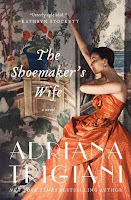The book discussion ranged far afield as usual, from the
ancient Middle East to the future of mankind, with a side discussion of the
soul thrown in for good measure.
In The Power of Parable:
How Fiction By Jesus Became Fiction About Jesus, John Crossan
discusses the parables Jesus told and attempts to put them into context. The author goes a bit further, and describes
his belief that some of authors of the Gospels were using parables as well in
their descriptions of Jesus’ life. Crossan contends that what some have
interpreted as history is actually parable. Crossan is a professor emeritus at
DePaul University and is the author of several books about Jesus, including The
Historical Jesus.
Edward O. Wilson is one of the best known living biologists,
and also one of those rare scientists who has a gift of being able to explain
complex ideas in ways both understandable and beautiful. One of the most remarkable qualities is that
after decades of study, he still retains his sense of wonder. Wilson’s specialty has been social insects,
particularly ants. In his new book The Social Conquest of Earth, he
tackles the big questions of life, combining biology, philosophy and religion
to render a fascinating new view of humankind.
Are the bonds of kinship really the strongest?
Kinship is also part of the subject of Fatal Colours: Towton
1461—England’s Most Brutal Battle by George Goodwin. The bloodiest battle ever fought on English
soil came in the 15th century when two opposing families each
claimed the right to the English throne.
Popularly known as “The War of the Roses” because of the family emblems,
armies of the House of Lancaster and the House of York met on the battlefield,
resulting in some 28,000 casualties.
The discussion moved on from questions of life to the
problem of death with The Undead by Dick Teresi. Today’s medical advances have made it very
difficult to determine when life actually ends.
There are a few standard tests used, but the bottom line is that you are
dead when your doctor says you’re dead— unless your relatives want to go to
court to say otherwise. The book is
darkly humorous and horrifying by turns, especially when the subject is organ
transplantation. This is definitely a
book to make you think about what constitutes consciousness, personhood and
life.
In The Singularity is Near, Ray Kurzweil postulates a time when
technological advances will become so rapid that humans will merge with
machines to create a new entity with biological elements. He sees this as bringing an end to most of
the traditional ills of the world: hunger,
environmental concerns, and even death. It’s up to the reader to decide if this is
exciting or terrifying.
No one suggested Philip K. Dick’s novel Do Androids Dream
of Electric Sheep? as a follow-up book, but it might be a good addition.
































